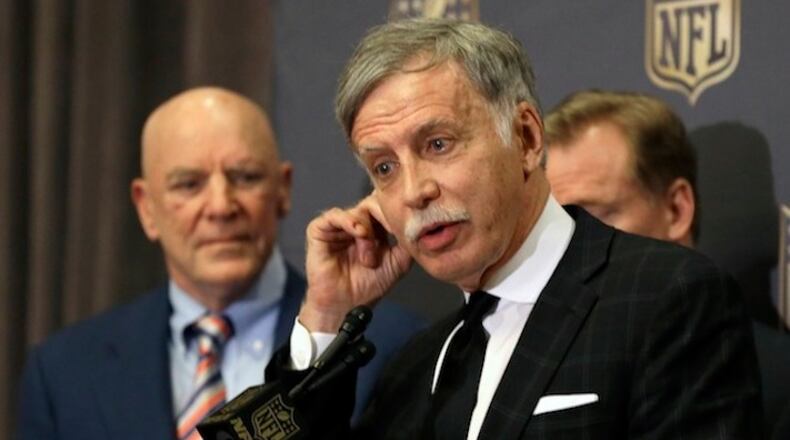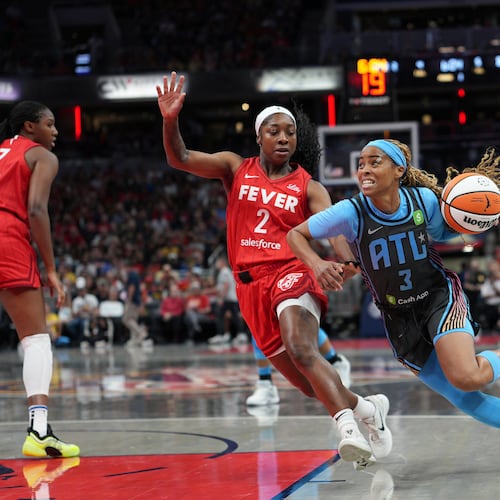The NFL hailed its decision to allow the St. Louis Rams to move to Los Angeles and build a nearly $3 billion stadium and entertainment district in suburban Inglewood as a triumphant return to the nation’s second-largest market.
The Dallas Cowboys’ owner, Jerry Jones, called the plan, which will be something akin to an NFL Disneyland, “a cornerstone decision.” Robert K. Kraft, the owner of the New England Patriots, said it was a “great solution.”
But beyond the smiles and backslaps, the choice represented a tectonic shift within an intensely political league that runs the nation’s most popular sport and a multibillion-dollar business.
While the vote among the owners was an overwhelming 30-2 to allow the relocation of the Rams, and possibly down the road the San Diego Chargers or the Oakland Raiders, it exposed a divide between some of the longest-serving owners and many of the newer ones who have paid hundreds of millions of dollars to join one of America’s most exclusive clubs.
The tug of war between the old guard and new has gone on for decades. But in recent years, the deaths of owners like Ralph Wilson of the Buffalo Bills (2014) and Bud Adams of the Tennessee Titans (2013), which used to be the Houston Oilers, have thinned the ranks of men who owned their clubs for many decades, if not from their inceptions.
Their role and ultimate defeat in the battle to return to Los Angeles will come to symbolize a changing of the guard that may have a lasting effect on how the league operates.
For months, a proposal by the Chargers and the Raiders to build a more modest venue in Carson, about 20 miles south of downtown Los Angeles, had the implicit backing of owners with names like Rooney and Mara who have been part of the league for generations.
They supported the Carson project in part because of their loyalty to Dean Spanos, whose family has owned the Chargers for more than 30 years. But they have also been around long enough to remember the trauma of the Colts, the Browns and other teams moving, and they wanted to minimize the disruption this time. Having the Chargers and the Raiders move within the state was less of a leap than having the Rams move halfway across the country.
But about a dozen owners bought their teams in the years after the last team, the Oilers, moved to Tennessee in 1997 and became the Titans. To some of them, moving the team from St. Louis, the 21st-largest television market, to Los Angeles, where the stadium would include a campus big enough to host mega events like the Super Bowl, was a financial no-brainer, even if it alienated many fans.
As the owners ran for their limousines after the vote, Stephen M. Ross, who bought the Miami Dolphins in 2008 for $1.1 billion, basically shrugged his shoulders when asked what he thought about St. Louis, which has now lost two teams, including the Cardinals, who moved to Arizona in 1988.
“Well, I mean, someone had to lose, obviously,” he said.
On another level, the preferences for the two stadium plans in the Los Angeles area amounted to a clash of worldviews.
Some of the longtime owners bought or inherited teams that were purchased for a relative pittance. Tim Mara bought the New York Giants for $500 in the 1920s, and Art Rooney paid $2,500 for the Pittsburgh Steelers. Their families still control the teams.
Ross and some of the other owners — including E. Stanley Kroenke of the Rams — paid nine- and 10-figure sums for their clubs and are understandably hungrier for their teams’ — and the league’s — financial pie to grow steadily, because it will help them get a faster return on their money.
While Kroenke will pay the NFL an estimated $650 million relocation fee and spend more than $800 million to help pay for the stadium and real estate project in Inglewood, he stands to gain handsomely.
The financial value of the Rams, who were ranked 28th of 32 NFL teams last year, will jump by moving to the Los Angeles area, where Kroenke can charge more for tickets, sponsorships, stadium naming rights, media deals and a host of other things. By controlling the venue instead of leasing it, he will keep all the profits.
The mixed-use development, which will include a hotel, office space and a theater, will generate more revenue to pay for the construction, which is expected to take about 10 years.
With so much money at stake, it is not surprising that owners like Kroenke have embraced Commissioner Roger Goodell’s goal of turning the league into a $25 billion business in the next decade or so, up from $12 billion now.
Perhaps unsurprisingly a group of these newer owners celebrated the victory together. Soon after the vote, Kroenke, Jones — one of his staunchest allies — and Terry Pegula, who is said to have paid a record $1.4 billion in cash for the Bills in 2014, dined together at Vallone’s, an upscale steakhouse next door to the hotel where the owners meeting was held.
After months of maneuvering and intrigue, the decision came quickly.
The Committee for Los Angeles Opportunities, which was coordinating the relocation sweepstakes and was led by Art Rooney II of the Steelers, Jerry Richardson of the Panthers and Bob McNair of the Texans, voted 5-1 in favor of the Carson project.
Committee recommendations often sway the full ownership, but not Tuesday. Jones and the other Inglewood supporters pushed for a secret ballot, a process typically reserved only for choosing Super Bowl cities and new commissioners. This allowed owners who had expressed support for the Carson stadium to cross the aisle without having to publicly declare their preference.
“Whenever you go to secret ballot, it is a game changer,” said Irwin Raij, a sports lawyer at Foley & Lardner who has worked on many team sales. “It makes it easier to make tough decisions.”
The results of the first secret ballot were 20-12 in favor of the Inglewood project. Put another way, only five owners joined the Chargers, the Raiders and five members of the Los Angeles Committee who backed the Carson project.
One owner said the vote amounted to a rebellion against the backers of the Carson plan.
With the Carson project teetering, the Los Angeles committee met with the Chargers and the Raiders as well as the Rams to broker a deal that would put a second team in Inglewood.
As those meetings dragged on, the other owners got antsy. One owner joked to Goodell that he wanted to get a workout in, while another wondered if he could slip out for a drink.
Through the early evening, the committee negotiated the terms and wrote the three-page resolution for the owners to consider. The Rams could move to Inglewood, and the Chargers would have a year to decide whether to join them as a half partner in the stadium project or as a tenant. If the Chargers opt not to move to Inglewood, the Raiders will get the option. The NFL also promised an extra $100 million to each team if it built a stadium in its home market.
At a news conference, Goodell lauded the deal but said the relocation process was “painful for the fans, communities, the teams and the league in general” and said it was a “bittersweet moment.”
But there was also relief.
In the bar downstairs, Mark Davis, the owner of the Raiders, signed autographs and posed for pictures with fans. Next door, Kroenke could be seen at dinner admiring a glass of red wine that perhaps tasted richer than usual.
About the Author
Keep Reading
The Latest
Featured


